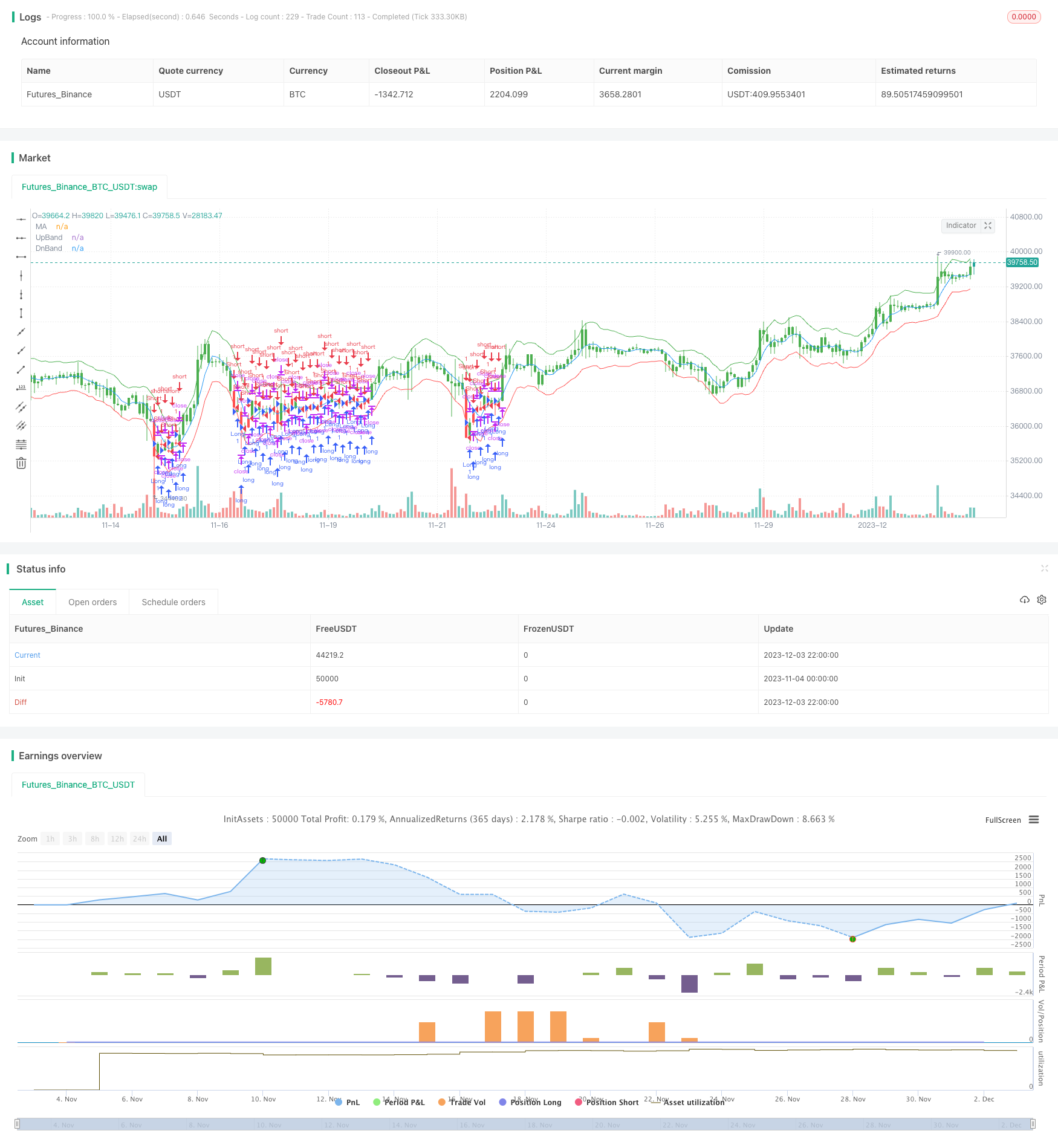
概述
STARC通道回测策略是基于STARC指标的量化交易策略。该策略通过构建STARC上下通道,实现突破买入和突破卖出的交易信号生成。同时,策略内置长短仓切换机制,可以适应不同市场环境。
策略原理
STARC通道回测策略的核心是STARC指标。该指标包括:
- 基准线:n日简单移动平均线SMA
- 上轨:SMA + K × 平均真实波动幅度ATR
- 下轨:SMA - K × ATR
当收盘价大于上轨时,产生买入信号;当收盘价低于下轨时,产生卖出信号。
该策略每日计算STARC通道的上下轨,并判断收盘价是否突破上下轨生成交易信号。同时,策略设置了反转参数,可以在长仓和空仓之间切换,适应不同市场行情。
优势分析
STARC通道回测策略具有以下优势:
- 使用STARC指标构建上下通道,回测效果良好;
- 内置长空仓切换机制,可以适应多种市场环境;
- 参数设置灵活,K值和均线长度都可以调整优化;
- 策略规则清晰易懂,容易理解实现;
- 可视化指标,直观判断市场位置。
风险分析
STARC通道回测策略也存在一定的风险:
- STARC指标常用于中长线交易,短期效果可能不佳;
- 突破交易容易被套,需要严格止损;
- 反转参数设置不当可能导致过于频繁交易;
- 参数优化不当可能导致曲线拟合。
需要采取如下措施防范风险:
- 选择合适的交易周期,如日线等中长线周期;
- 设置合理的止损位置,控制单笔损失;
- 审慎设置反转参数,避免频繁切换仓位;
- 多组合参数优化,防止过拟合。
优化方向
STARC通道回测策略的主要优化方向包括:
- 优化参数:调整均线长度、K值、ATR周期等参数,寻找最优参数组合;
- 加入止损机制:设置移动止损、时间止损、百分比止损等,控制风险;
- 结合其他指标:加入成交量、布林带等指标进行过滤,提高效率;
- 动态调整参数:根据市场变化自动优化调整参数,提高稳定性。
这些优化方向能够在控制风险的前提下,提高策略的收益率和稳定性。
总结
STARC通道回测策略整体效果良好,基于STARC指标实现了中长线突破交易。策略优势是使用STARC通道产生交易信号稳定,同时设置反转机制可以适应市场变化。我们也需要防范shean,设置止损和优化参数,使策略更稳定高效。总的来说,该策略是中长线突破交易的有效工具。
策略源码
/*backtest
start: 2023-11-04 00:00:00
end: 2023-12-04 00:00:00
period: 2h
basePeriod: 15m
exchanges: [{"eid":"Futures_Binance","currency":"BTC_USDT"}]
*/
//@version=2
////////////////////////////////////////////////////////////
// Copyright by HPotter v1.0 23/04/2018
// A type of technical indicator that is created by plotting two bands around
// a short-term simple moving average (SMA) of an underlying asset's price.
// The upper band is created by adding a value of the average true range
// (ATR) - a popular indicator used by technical traders - to the moving average.
// The lower band is created by subtracting a value of the ATR from the SMA.
// STARC is an acronym for Stoller Average Range Channels. The indicator is
// named after its creator, Manning Stoller.
//
// You can change long to short in the Input Settings
// WARNING:
// - For purpose educate only
// - This script to change bars colors.
////////////////////////////////////////////////////////////
strategy(title="STARC Bands Backtest", overlay = true)
LengthMA = input(5, minval=1)
LengthATR = input(15, minval=1)
K = input(1.33, minval=0.01, step = 0.01)
reverse = input(false, title="Trade reverse")
xMA = sma(close, LengthMA)
xATR = atr(LengthATR)
xSTARCBandUp = xMA + xATR * K
xSTARCBandDn = xMA - xATR * K
pos = iff(close > xSTARCBandUp, 1,
iff(close < xSTARCBandDn, -1, nz(pos[1], 0)))
possig = iff(reverse and pos == 1, -1,
iff(reverse and pos == -1, 1, pos))
if (possig == 1)
strategy.entry("Long", strategy.long)
if (possig == -1)
strategy.entry("Short", strategy.short)
barcolor(possig == -1 ? red: possig == 1 ? green : blue )
plot(xMA, color=blue, title="MA")
plot(xSTARCBandUp, color = green, title="UpBand")
plot(xSTARCBandDn, color=red, title="DnBand")